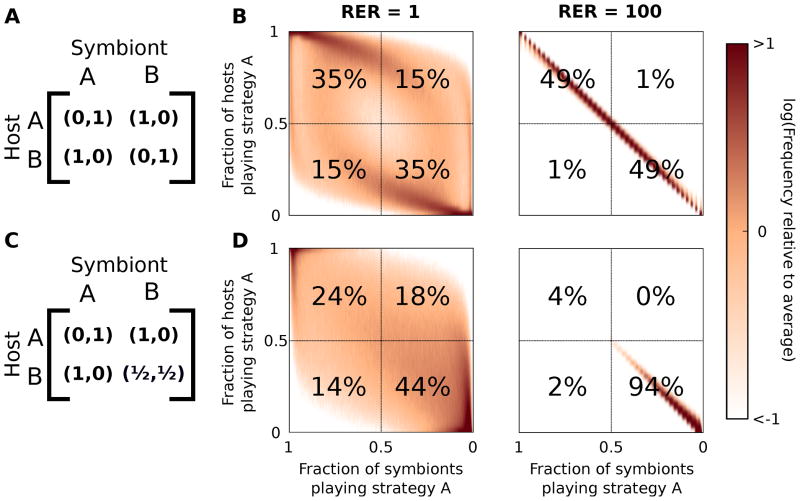Figure 4.
Antagonistic interactions also arrive at the sequential game equilibrium for high relative evolutionary rate (RER) of the symbiont. (A) The payout matrix of the cyclic fixed-sum game. The sum of the payouts is constant for each entry. (B) When the hosts and symbionts reproduce at the same rate, the population dynamics are cyclic with a slight bias towards the upper left and lower right quadrants. However, when the symbionts reproduce much faster, the host is highly disfavored. (C–D) If an asymmetry is added, similar dynamics result, but it becomes clear that rather than the host simply being disfavored, the sequential game equilibrium results at high RER. (To account for basal growth rate, an offset of 0.05 for (A–B) and 1 for (C–D) was added to each payout matrix)

